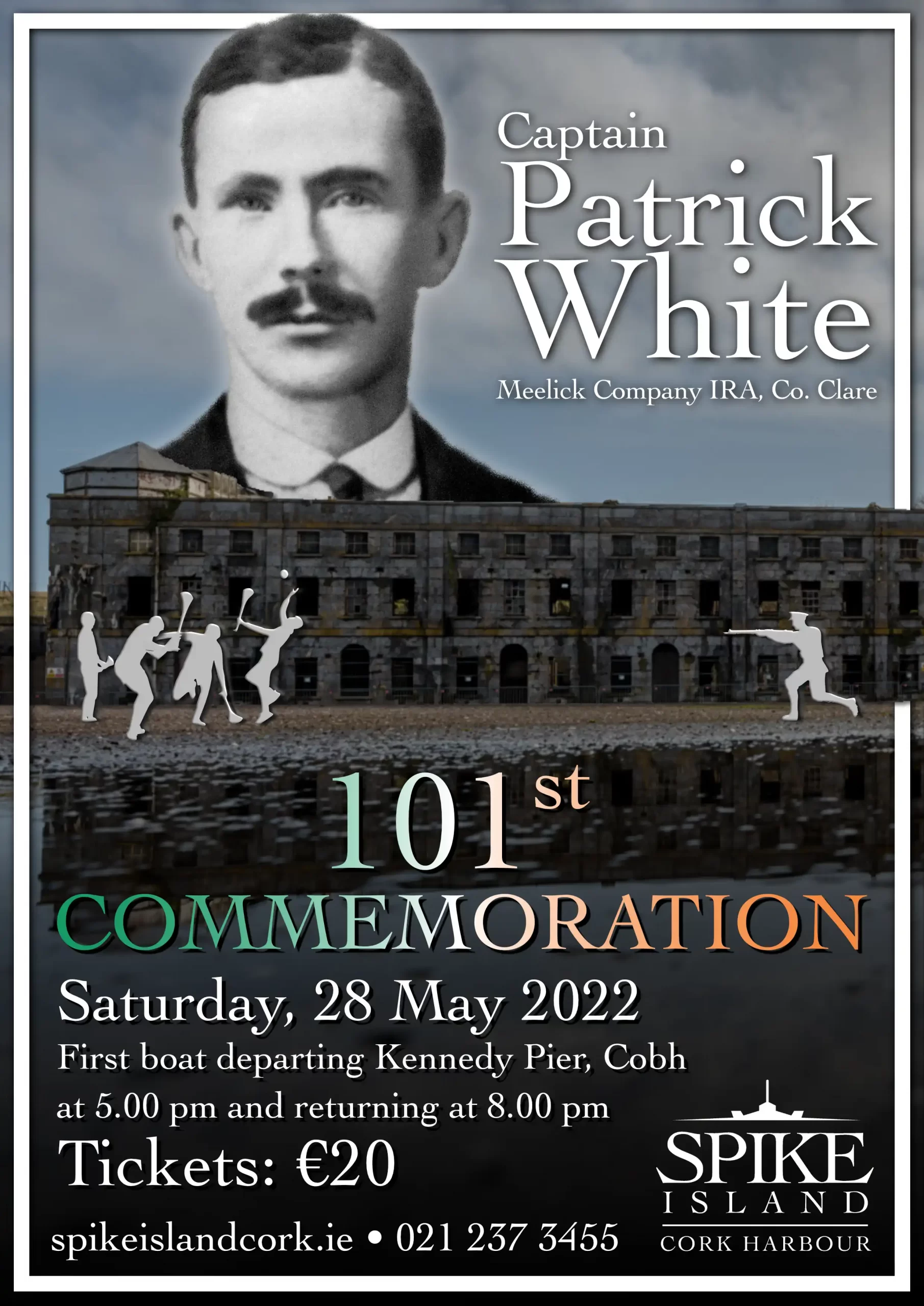



When museums, galleries, and cultural institutions were forced to close abruptly in March 2020, many art events had to be cancelled. The pandemic has not been easy for anyone and the art and culture sector has suffered considerably. Therefore, Spike Island was delighted to host an art exhibition ‘Modern Captivity’ by Maria O’Sullivan in August 2020.
‘Modern Captivity’ refers to the various forms captivity can take; both physical and psychological. The feeling of entrapment threads throughout the artwork, often using a constant transformation as a narrative to reference the imposing nature of modern society and its isolating effect. Social isolation is more present nowadays than ever before and can have significant consequences for people and communities across the globe.
Each composition shows structures and scenes shifting into something new. Irregular textures and strokes are used to build detailed representations of the increasingly abstract and restless world we inhabit. A large part of what determines the direction of Maria’s work is the artist’s intuition. Focusing on solitude, introspection and the nostalgic exploration of time and place, Maria often uses a variety of techniques and mixed media to examine the history of architecture and the transformation of space over time.
‘Modern Captivity’ is Maria’s first solo exhibition.
 Maria O’ Sullivan was born in Cobh, Co Cork Ireland in 1990. She graduated with an Honours degree in Fine Art from Crawford College of Art and Design in June 2014.
Maria O’ Sullivan was born in Cobh, Co Cork Ireland in 1990. She graduated with an Honours degree in Fine Art from Crawford College of Art and Design in June 2014.
From the Degree Show she was selected to exhibit in several group exhibitions, including the annual Fledglings exhibition in the Lavit Gallery Cork, The Joan Clancy Gallery in Dungarvan, and the Emerging Artists Exhibition in St. Patrick’s Hospital, Dublin.
Maria was also awarded a three-month residency with Scuola Internazionale di Grafica in Venice where she spent time developing her practice. In 2015 her work was represented by the Doorway Gallery in Dublin and the Agora Gallery in Chelsea, NYC where she first exhibited her Urban Series.
Since 2018, her artwork has been exhibited in the Doorway Gallery Dublin, Cork Airport, and the Half Light Gallery in Middleton. She has also worked with St. Aloysius School in Cork to create a body of work for the ‘Future Forms’ Exhibition in the Glucksman Gallery, UCC, March 2019.
Maria’s work is collected both nationally and internationally.
The Trial is a multi-screen visual art installation on the history of healthcare and human rights in the Irish criminal justice system. Created by visual artist Sinead McCann, made in collaboration with men from the Bridge Project, Dublin, who have lived prison experiences, and draws from historical research by UCD historians Catherine Cox and Fiachra Byrne. It is part of a larger Wellcome Trust funded research project ‘Prisoners, Medical Care and Entitlement to Health in England and Ireland, 1850-2000’.
For twenty-two minutes, three characters–Tommy, Charlie and Neilí–tell real-life stories of those who were held or worked in Irish penal institutions during the 19th and 20th centuries. The thematic focus is on experiences of solitary confinement, dealing with separation from family when in prison, mental and physical wellbeing in prison and childhood experiences of detention in St Patrick’s Institution, Dublin.
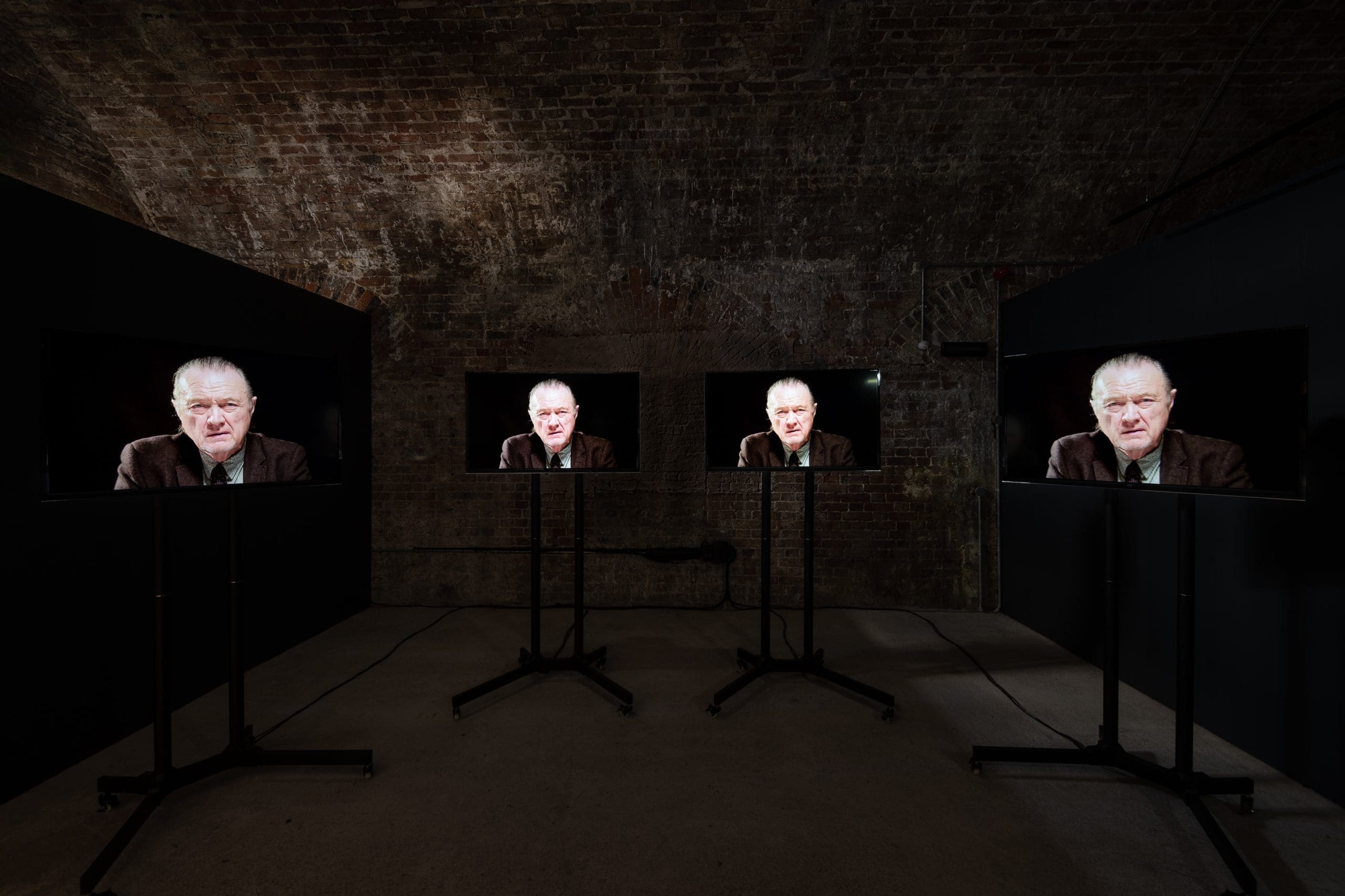 The making of The Trial involved the design of a creative process that enabled the men from the Bridge Project to engage with UCD academic research on healthcare in prison, past and present. The script for The Trial was developed through a series of creative workshops using carefully selected historic research and the men’s own health in prison experience. Two case studies from the 1880s, John Burns and John Burke resonated strongly with the men and were developed into mini scripts.
The making of The Trial involved the design of a creative process that enabled the men from the Bridge Project to engage with UCD academic research on healthcare in prison, past and present. The script for The Trial was developed through a series of creative workshops using carefully selected historic research and the men’s own health in prison experience. Two case studies from the 1880s, John Burns and John Burke resonated strongly with the men and were developed into mini scripts.
Actors Tommy O’Neill and Neilí Conroy then performed these scripts in a series of theatre workshops led by the men from the Bridge Project. During this process, the men authored monologues using their own experience of healthcare in Irish prison in the late 20th century as well as their responses to the historic research. Their monologues were incorporated into the script for The Trial along with responses from the Irish Prison Service, a prison chaplain, an addiction councellor, two former prison governors and a representative from the Irish Penal Reform Trust. Combined, these accounts present a compelling story of healthcare in prison.
In 1847, the Shell Store where The Trial is exhibited was first a prison hospital. Then it was converted into a juvenile prison that held up to 100 boys. The Trial makes explicit use of this history to physically and poetically reference healthcare in prison over time.
Script Writer Sarah Meaney
Video production Mary Caffrey and Dan Monk Sixbetween


The inaugural SPIKE ISLAND LITERARY FESTIVAL is now on sale for the weekend of 02nd–04th September 2022! Sponsored by Cork County Council, Commodore Hotel, Bella Vista Hotel, Trigon Hotels, Fota Island Resort and Belvelly Castle. Dedicated to the popular theme of crime writing, visit an island location perfect for inspiring writers, with a dark history of four prisons over 400 years that has inspired many books. Lucky attendees can further their knowledge and writing skills with a series of author talks and workshops, suited to all genres and storytellers.
Every visitor will also enjoy very special access to all areas, with a ‘writers tour’ on arrival, which will focus on the criminals and crimes associated with this historic island. Join us for an unbelievable deep dive into writing and the art of storytelling, at Ireland’s historic island.
You can choose from several great event formats:
Author speaking events – Where authors share their experience and advice in a relaxed setting, inspiring budding authors to achieve their goals. Includes a special tour on arrival.
Crime writing workshop – Join seasoned published author Kevin Doyle for a deep dive into writing in this exciting genre. Small class size and includes a tour on arrival. Expect practical, applicable tips.
Screenwriting workshop – Writing for the screen has its own challenges, but incredible rewards! Learn the secrets at this insightful afternoon in small group size with Philip Davison, and see your name on the small or big screen one day!
Meet the publisher – Submit your synopsis and opening chapter in advance and receive advice from the people who really matter – the professionals who will decide if your book is published. Get time with highly experienced industry experts from the esteemed, Liberties Press – Small group size and tour included in this afternoon visit. Take that all-important step to being published.
Author readings – Sit in as some world-class writers perform readings in incredible locations like prison cells and artillery gun parks! Enjoy a very special ‘Behind the Scenes’ tour that focused on our writers and criminals that inspired books, and hear from the likes of Cónal Creedon, Philip Davison, Catherine Kirwan and more. Going on sale at the end of June.
PRICE PER TICKET: €25
BOAT IN: 5 pm – RETURN: 8.15 pm
A fantastic evening on Spike Island with renowned authors Alex Barclay and Liz Nugent interviewed by broadcaster PJ Coogan.
On arrival, visitors will be given a guided tour with a focus on a murder mystery and the darker tales of Spike Island. On arrival at the Fortress itself, there will be time to enjoy a tea/coffee before the event begins.
This will be an intimate event with limited numbers in attendance. A unique opportunity to get such an insight into the minds of two of Ireland’s foremost thriller writers.
PRICE PER TICKET: €25. Includes ferry, short tour and event.
BOAT IN: 12.30 pm – RETURN: 4.30 pm
A rare opportunity to meet face to face with one of Ireland’s most renowned publishing houses, Liberties Press. Receive feedback on your work and tips on how to make your work stand out to publishers.
On arrival, visitors will be given a guided tour with a focus on a murder mystery and the darker tales of Spike Island. On arrival at the Fortress itself, there will be time to enjoy a tea/coffee before the event begins.
Attendees will be invited to submit a synopsis & opening chapter of their work in progress to sean@libertiespress.com in advance of the festival and he will give feedback anonymously on the day. Anyone submitting should put “Spike Island Submission” in the subject line. Please do not submit work if you have not bought a ticket.
PRICE PER TICKET: €25 – Includes boat, tour and 2.5 hours approx in screenwriting workshop.
BOAT IN: 12:30 pm – RETURN: 4.30 pm
A fantastic afternoon on Spike Island with renowned author Phillip Davison giving an intimate screenwriting workshop
On arrival, visitors will be given a guided tour with a focus on a murder mystery and the darker tales of Spike Island. On arrival at the Fortress itself, there will be time to enjoy a tea/coffee before the event begins.
This will be an intimate event with limited numbers in attendance. A unique opportunity to get such an insight into the mind and writing methods of one of Ireland’s foremost writers.
PRICE PER TICKET: €25
BOAT IN: 4 pm – RETURN: 7 pm
A fantastic evening on Spike Island with renowned authors John Connolly & Mark Billingham in conversation.
On arrival, visitors will be given a guided tour with a focus on a murder mystery and the darker tales of Spike Island. On arrival at the Fortress itself, there will be time to enjoy a tea/coffee before the event begins.
This will be an intimate event with limited numbers in attendance. A unique opportunity to meet two of Ireland and England’s foremost thriller writers
PRICE PER TICKET: €25
BOAT IN: 12.30 pm – RETURN: 4.30 pm
A fantastic afternoon on Spike Island with renowned author Kevin Doyle giving an intimate crime writing workshop.
On arrival, visitors will be given a guided tour with a focus on a murder mystery and the darker tales of Spike Island. On arrival at the Fortress itself, there will be time to enjoy a tea/coffee before the event begins.
This will be an intimate event with limited numbers in attendance. A unique opportunity to get such an insight into the mind and writing methods of one of Ireland’s foremost thriller writers.
PRICE PER TICKET: €25
BOAT IN: 12:30 pm – RETURN: 4:30 pm
A fantastic evening on Spike Island with renowned authors Michelle Dunne & Andrea Mara interviewed by broadcaster PJ Coogan.
On arrival, visitors will be given a guided tour with a focus on a murder mystery and the darker tales of Spike Island. On arrival at the Fortress itself, there will be time to enjoy a tea/coffee before the event begins.
PRICE PER TICKET: €25
BOAT IN: 12.30 pm – RETURN: 4.30 pm
Join us on this very special literary visit for a ‘Behind the Scenes’ tour followed by readings from authors in unique areas. Once you step off the 12.30 pm ferry your guide will share the unbelievable tales of our murderers and notorious criminals. Many have inspired writers to put pen to paper, and we will discuss the resulting books. Then we head underground through the Spike Island tunnels, where prisoners were held in the 1800s. Normally off-limits to day tours, see a side of the island normally never seen. Then join amazing authors for readings in incredible settings, like prison cells, artillery gun parks and more. Tour and reading complete, you are free to explore the rest of our amazing island!
Reading 1 – Catherine Kirwan
Reading 2 – Amy Cronin
Reading 3 – Tadgh Coakley
Reading 1 – Philip Davison
Reading 2 – Cónal Creedon

Alex’s first two crime novels feature NYPD homicide detective, Joe Lucchesi, and the six novels that followed feature bipolar FBI agent, Ren Bryce. She also writes for screen and is currently developing an original crime series for television. Alex was born in Dublin, and lives on the Beara peninsula in Cork, where she’s set two of her most recent books – the psychological thriller, I Confess, and her debut novel for teens, My Heart and Other Breakables, published in 2022 by Harper Collins. Also In 2022, her YA crime debut, Rock Paper Killers, was published by Simon & Schuster under the pseudonym Alexia Mason
Find out more at harpercollins.co.uk/blogs/authors/alex-barclay
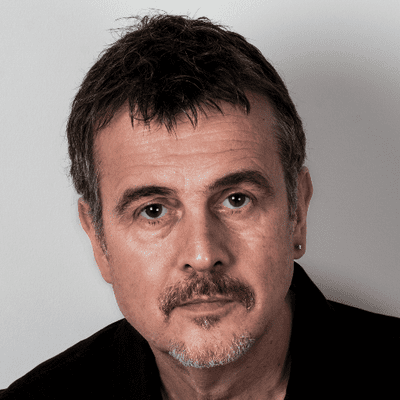
Mark is an Actor, television writer, comedian and international bestselling author of the Tom Thorne series. With nineteen books in the series, the first two became a six-part TV series, Thorne which originally aired on Sky One.
Find out more at uk.markbillingham.com

is from Mallow and lives in Cork city. His debut novel The First Sunday in September (2018) was shortlisted for the Mercier Press Fiction Prize. Whatever It Takes was chosen as the 2020 Cork, One City One Book. Everything (a sports autobiography, which he co-wrote with its subject, Denis Coughlan) was picked as one of the 2020 sports books of the year in The Sunday Times, The Irish Examiner and The Irish Times. The Game: A Journey into the Heart of Sport (2022) was described by Donal Ryan as a ‘towering work’. Tadhg’s short stories, articles and essays have been widely published.
Find out more at www.tadhgcoakley.ie
 John Connolly
John ConnollyInternational bestselling author of 30+ books, including the Charlie Parker novels, The Book Of Lost Things, the Samuel Johnson Adventures and more.
Find out more at www.johnconnollybooks.com
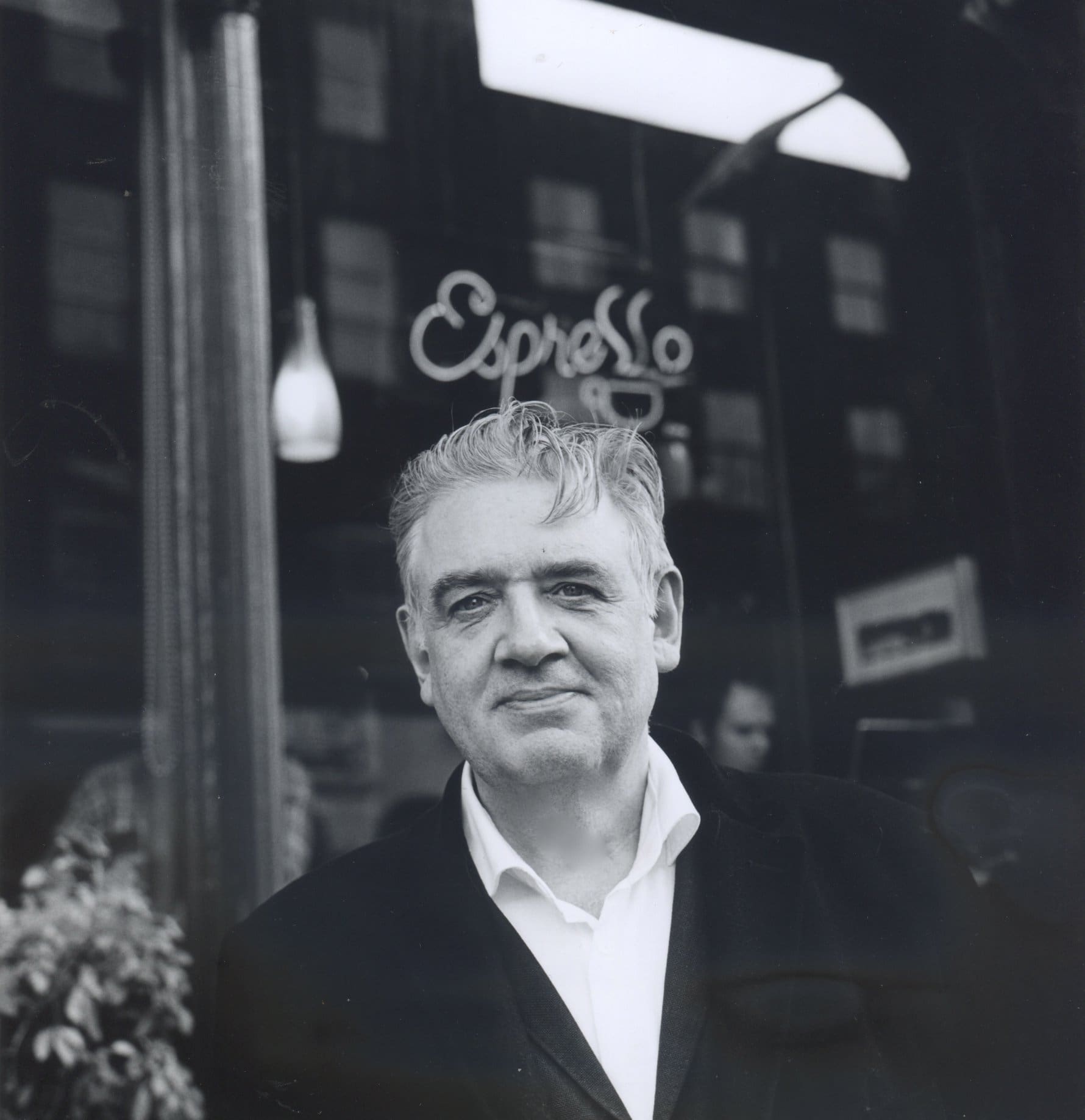 Cónal Creedon
Cónal Creedonis an award-winning novelist, playwright and documentary filmmaker.
Find out more at www.conalcreedon.com

is a writer from Cork, Ireland. She is a fan of thrillers and crime novels, and her love of suspense and plot twists flows into her writing. Blinding Lies is Amy’s debut novel and is the first part of a trilogy. It is available online and in paperback in all good bookshops. It was a #1 bestseller in the Amazon Northern Irish Crime category, and #7 in the online Irish Crime category, as well as a WHSmith bestseller. The follow-up, Twisted Truth, is available now online and the paperback will be available in bookshops soon.
Find out more at www.amycroninauthor.com
 Philip Davison
Philip Davisonhas been described by Bob Geldof as “Ireland’s best-kept secret”; his work has been compared by the Irish Independent with that of John le Carré and Graham Greene. His most recent novels are Quiet City and Eureka Dunes, both published by Liberties Press. A TV adaptation of his novel The Crooked Man, starring Ross Kemp, was broadcast on ITV. He has written twelve plays for radio and has co-written two television dramas, Exposure and Criminal Conversation, and Learning Gravity, a documentary film on poet and undertaker Thomas Lynch. His play The Invisible Mending Company was performed on the Abbey Theatre’s Peacock stage.
Find out more at www.philipdavison.com
 Kevin Doyle
Kevin Doyleis the author of two novels, To Keep A Bird Singing and A River Of Bodies. He co-wrote (with Spark Deeley) the illustrated children’s book, The Worms that Saved the World. A widely experienced creative writing teacher he is currently chairperson of the Irish Writers Union.
Find out more at www.kevindoyle.ie
 Michelle Dunne
Michelle Dunneis a writer from Cobh who has used some of her own experiences in the Irish Army and as a UN Peacekeeper to write her debut thriller, the first in the Lindsey Ryan series, While Nobody Is Watching which is currently in development for television. Her follow-up book, The Invisible was published in April 2022.
Find out more at www.michelledunnebooks.com
 Catherine Kirwan
Catherine Kirwangrew up on a farm in the parish of Fews, County Waterford. She studied law at UCC and lives in Cork where she works as a solicitor. Her first novel, Darkest Truth, was chosen as Cork’s One City One Book by Cork City Libraries in 2019. Her current book, Cruel Deeds, is out now from Hachette Ireland.
Find out more at Penguin Books
 Andrea Mara
Andrea Marais a Sunday Times and Irish Times Top Ten bestselling author, who has been shortlisted for several awards, including Irish Crime Novel of the Year at the An Post Book Awards. Her most recent novel, All Her Fault, was Sunday Times Crime Book of the Month, a top ten bestseller in the UK and Ireland, and a Kindle Top 5 bestseller. She lives in Dublin, Ireland, with her husband and three children, and also runs a multi-award-winning parent and lifestyle blog, OfficeMum.ie. Her new crime novel, Hide And Seek, will be published in August 2022.
Find out more at officemum.ie
 Liz Nugent
Liz Nugentis a writer of award-winning psychological suspense novels Unravelling Oliver (2014), Lying in Wait (2016), Skin Deep (2018) and Our Little Cruelties (2020). All four books topped the Irish bestsellers list and Liz has won multiple literary awards. Her books have also been optioned for screen adaptations. Liz’s books have been translated into 16 languages and she has also written extensively for radio and television in drama and animation. In October 2017, Liz won the Irish Woman of the Year Award for Literature and in February 2021, she was awarded the James Joyce medal by the Literary Historical Society of UCD.
Find out more at www.liznugent.ie

The Punishment Block is the only purpose-built cell block in the Fort. It was built in response to the murder of Warder William Reddy in 1856.
Work began in 1858 using local limestone with military and convict labour, and it was opened in 1860.
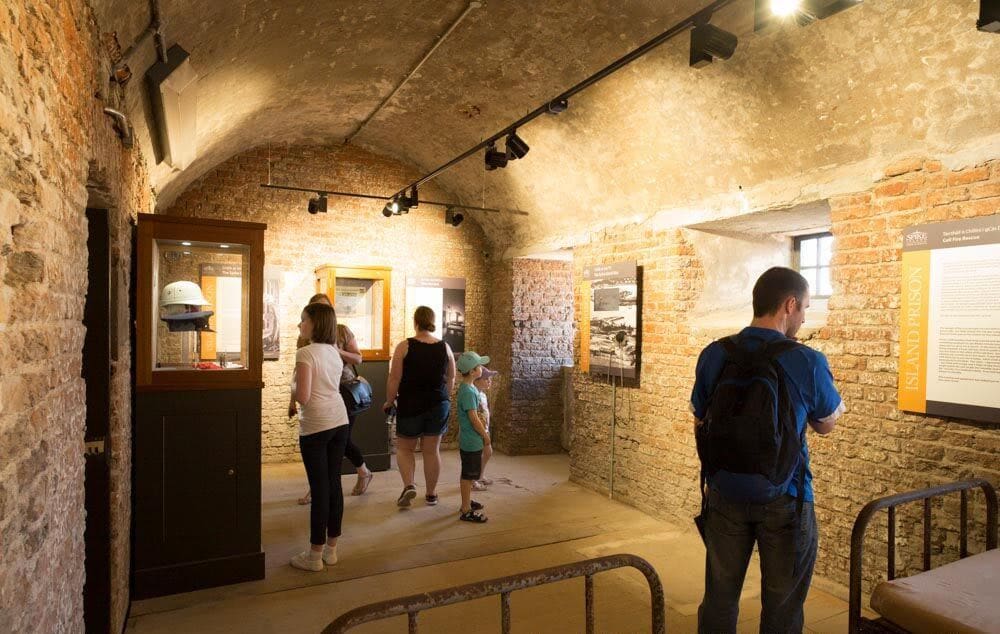 It consisted of twenty-eight solitary confinement cells and housed the ‘Penal Class’, considered the most dangerous prisoners. They were heavily chained and clothed in black from head to toe, with a veil hiding all but their eyes.
It consisted of twenty-eight solitary confinement cells and housed the ‘Penal Class’, considered the most dangerous prisoners. They were heavily chained and clothed in black from head to toe, with a veil hiding all but their eyes.
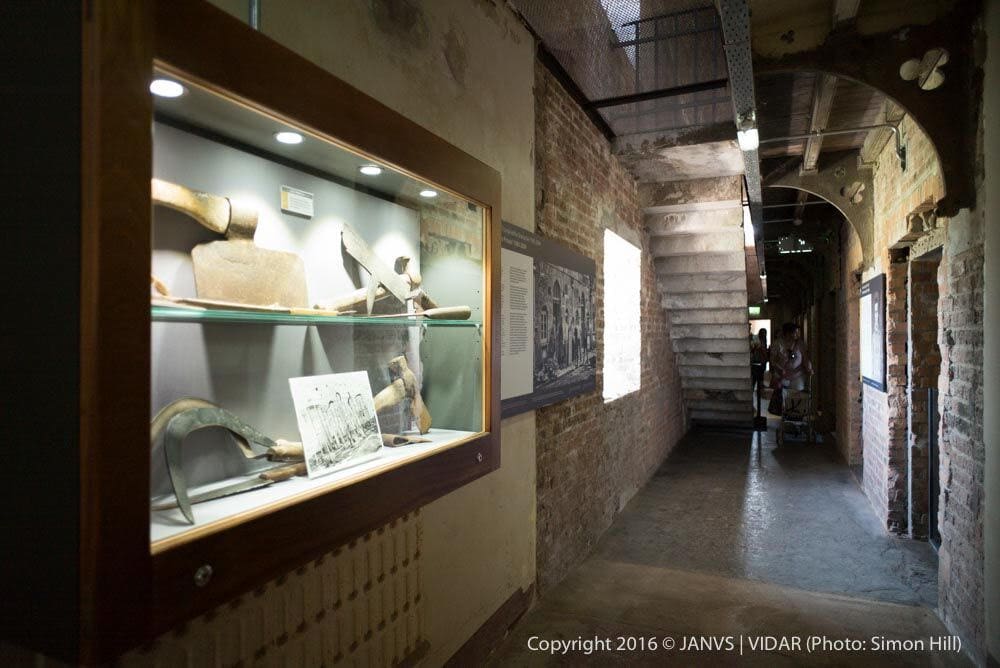 Conditions inside the block were the harshest inside the prison. At first, the cells were furnished with only a stool and convicts slept on the floor. Prisoner descriptions of medieval conditions in a Victorian prison outraged many. There were several suicide attempts and the block was the main reason that Spike Island was described as “Hell on earth” by the penal classes. A sentence to Spike Island was the worst time any offender could do, and this was largely attributable to the Punishment block.
Conditions inside the block were the harshest inside the prison. At first, the cells were furnished with only a stool and convicts slept on the floor. Prisoner descriptions of medieval conditions in a Victorian prison outraged many. There were several suicide attempts and the block was the main reason that Spike Island was described as “Hell on earth” by the penal classes. A sentence to Spike Island was the worst time any offender could do, and this was largely attributable to the Punishment block.
During the convict era 1847-1883, it housed political prisoners who were guilty of ‘treason against the Crown’.
Today, visitors can see the Guard room and learn how archaeologists worked on the site. The Dark Cells can be explored by torchlight, while the modern solitary cells are also on view which were in use right up until 2004. The cells of Irish nationalists Patrick Tierney and John Mitchel are both recreated, and the upstairs rooms of the block contain an art exhibition of prisoners artwork created in the 1980’s and 1990’s.
CHILDREN’S PRISON:
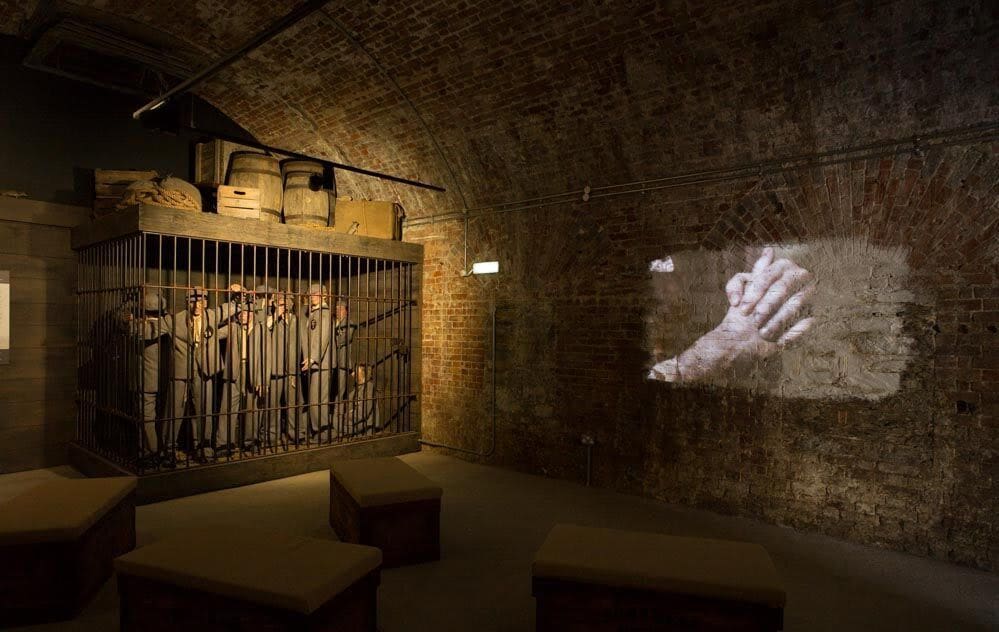 Before Victorian times there was no distinction between age groups when it came to crime and punishment, but during the 1850s when Spike Island’s prison population had swollen to the largest in the world, people began to discuss the need for prisoner reform rather than punishment.
Before Victorian times there was no distinction between age groups when it came to crime and punishment, but during the 1850s when Spike Island’s prison population had swollen to the largest in the world, people began to discuss the need for prisoner reform rather than punishment.
Conditions would slowly improve for child convicts and by the time Spike Island’s 19th Century prison was built it was decided to at least separate the adults from the children. But a sentence on Spike Island was still very hard for the 100 children who were held in the childrens dormitory. Long chains were hung from the ceiling and they supported several hammocks in which the children would sleep, having to scamper up the chains to their designated bunk.
Sadly not all children made it off the island with many succumbing to the difficult conditions. A good many would have arrived already weak from the famine conditions which had gripped Ireland in the late 1840s.
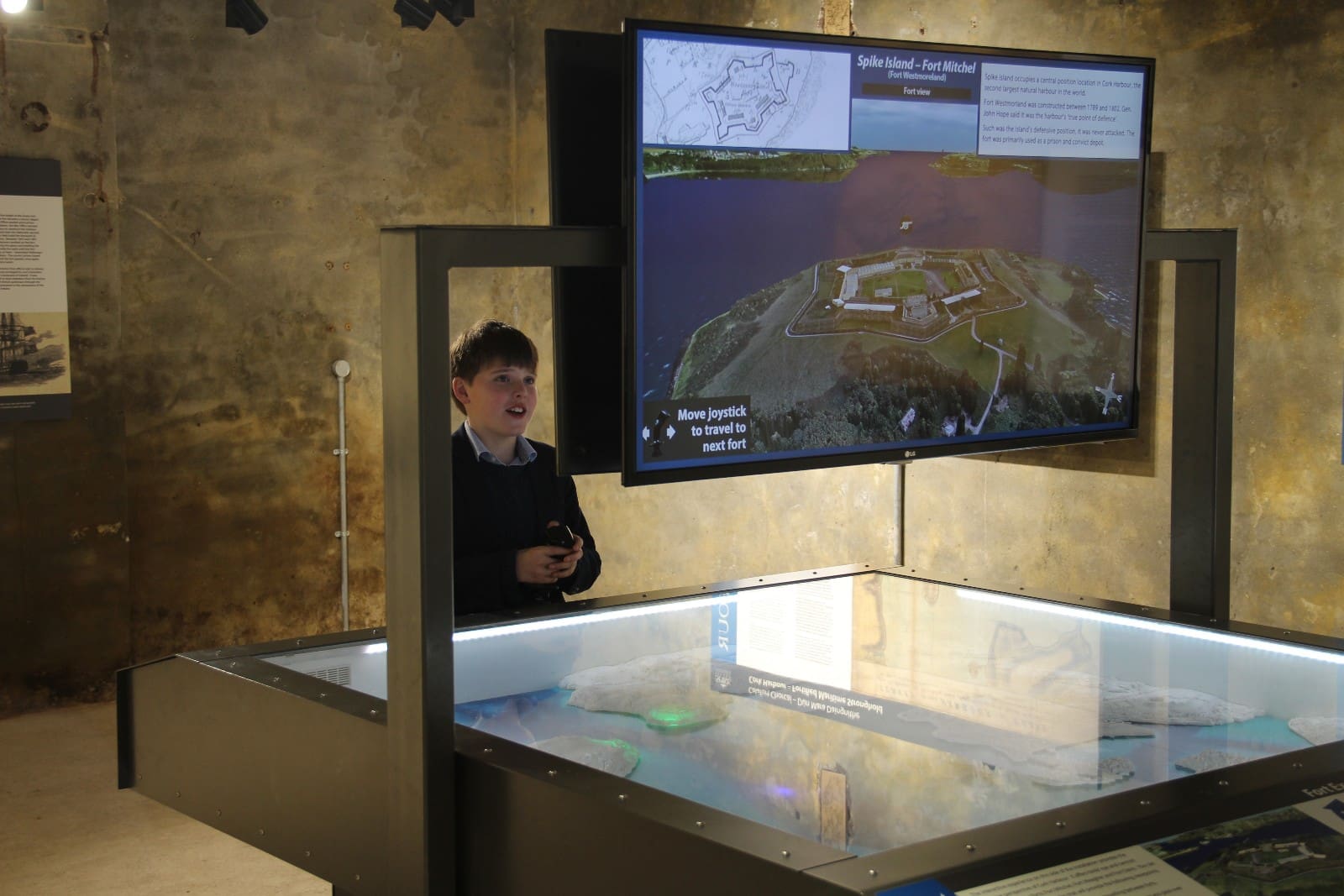 The building used to house the boys became the shell store for the fort, used to protect the ammunition from enemy shells. Today the building houses a re-creation of the cells identical to those on a convict vessel. These convict ships were moored in Cork harbour and transported prisoners from Ireland to overseas. There are also video installations telling the stories of three generations of Spike Island prisoners seperated by 3 centuries. Next to this is our John Mitchel room which tells the story of the nationalist after whom the fort is named.
The building used to house the boys became the shell store for the fort, used to protect the ammunition from enemy shells. Today the building houses a re-creation of the cells identical to those on a convict vessel. These convict ships were moored in Cork harbour and transported prisoners from Ireland to overseas. There are also video installations telling the stories of three generations of Spike Island prisoners seperated by 3 centuries. Next to this is our John Mitchel room which tells the story of the nationalist after whom the fort is named.
Our social history rooms have many interviews with the former residents of the island and the adjoining Cork harbour room has old maps from the harbour and an interactive audio display where you can steer a ship into Cork Harbour and use the cannons on Spike Island to defend the harbour!
This fascinating building with its tragic past and modern interpretation is not to be missed on a visit to Spike Island.
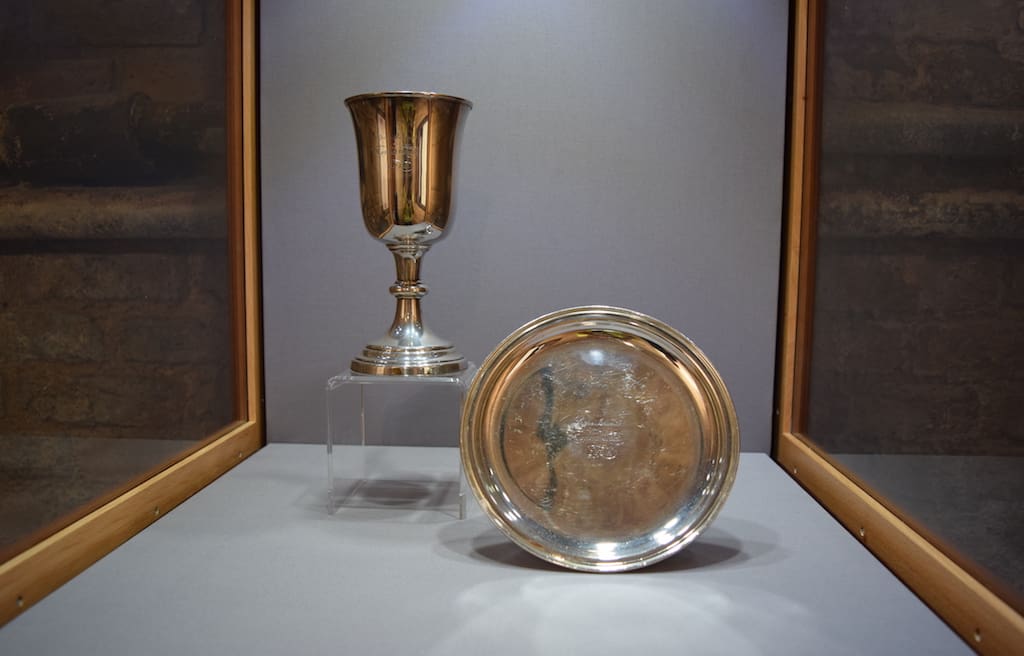 A silver-plated chalice and paten were used in the convict chapel on Spike Island between 1848 and 1883. It was used at the weekly mass on the island and it served the most notorious murders and brigands as well as the forts military men and prison officers. Religion gave spiritual relief to the unfortunate convicts and was seen as a very important part of their rehabilitation journey.
A silver-plated chalice and paten were used in the convict chapel on Spike Island between 1848 and 1883. It was used at the weekly mass on the island and it served the most notorious murders and brigands as well as the forts military men and prison officers. Religion gave spiritual relief to the unfortunate convicts and was seen as a very important part of their rehabilitation journey.
When the convict depot on Spike Island closed in 1883 the remaining convicts were transferred to Mountjoy Jail prison in Dublin. The chalice and paten were also transferred to Mountjoy where they were used for religious services for over a century.
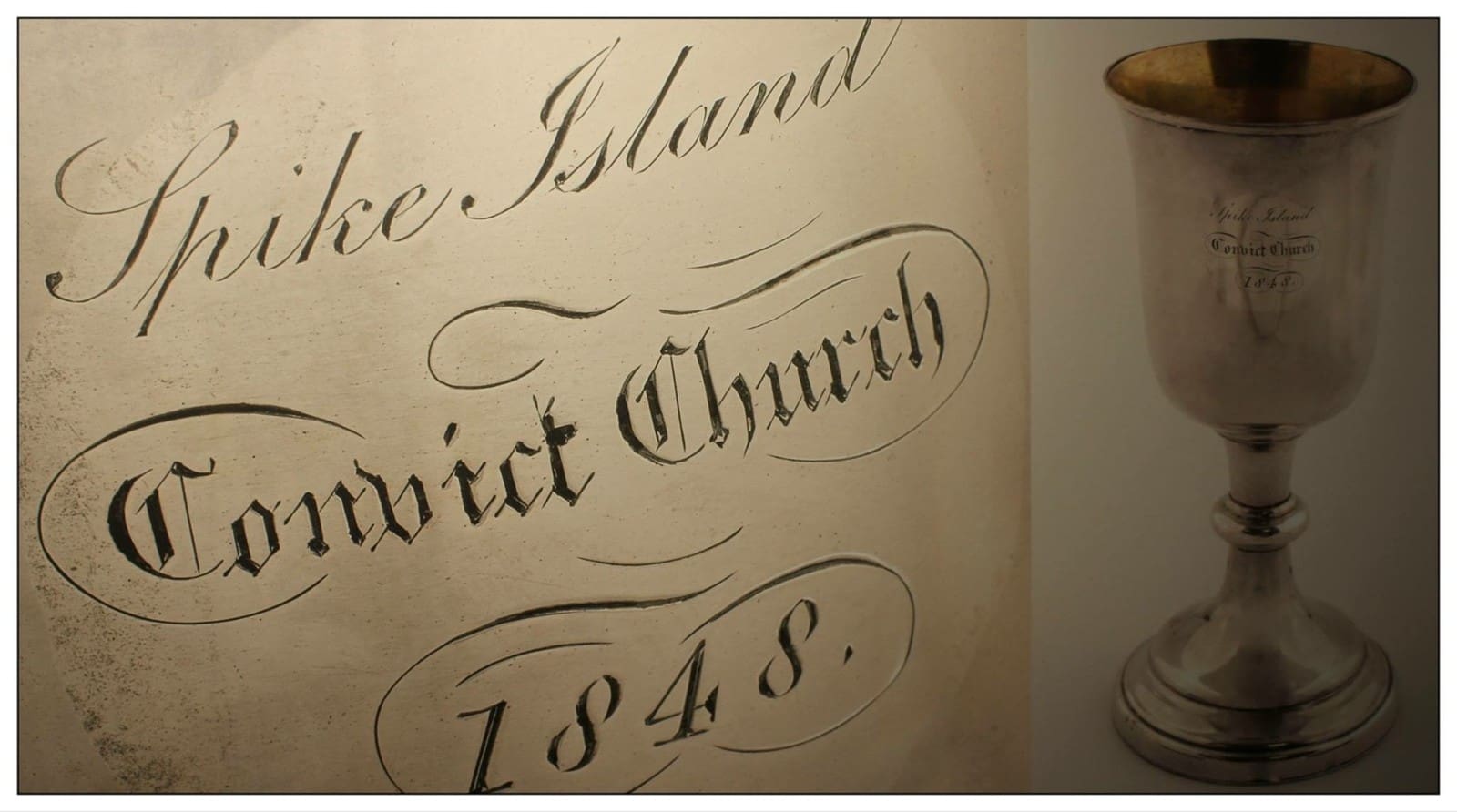 The beautiful chalice is emblazoned with the Spike Island name and uniquely has the words ‘Convict Church 1848’ engraved on it, a rare distinction. Both items were generously donated to the Spike Island museum by the Irish Prison Service in 2017 and are now on display in the Punishment Block on Spike Island.
The beautiful chalice is emblazoned with the Spike Island name and uniquely has the words ‘Convict Church 1848’ engraved on it, a rare distinction. Both items were generously donated to the Spike Island museum by the Irish Prison Service in 2017 and are now on display in the Punishment Block on Spike Island.
The Old Cork in Colour exhibition is the result of a collaboration between Spike Island and the authors of the hugely popular ‘Old Ireland in Colour’ books, Professor John Breslin and Dr Sarah-Anne Buckley.
The authors have used their digital and research skills to identify and colourise over thirty images from the city and county of Cork, many of them being colourised for the first time. There are ten images taken on Spike Island that showcase its rich past, as a military, penal and social space, while the remaining twenty images include areas like Cork City, Cobh, Kinsale, Bantry, Bandon and Cork Harbour.
John was able to make use of a computer-based “artificial intelligence” system called DeOldify that does an initial colourisation of a black and white photograph in a short period. After that, he manually colourises various aspects of the photograph in Photoshop to correct any incorrect colours—such as uniforms, eyes, hair, etc.—based on any records or research he or Sarah-Anne can find. For uniforms, John and Sarah-Anne contacted several uniform specialists in Ireland and the UK to find out about various shades of khaki, green, etc. for those British and Irish uniforms that he had colourised from around the WWI time frame. For eyes, hair, etc. he consulted portrait paintings, Ellis Island travel records, biographies, prison records, family members and any other relevant records where available.
“Often the details are unknown, so you must choose a colour that looks right or that seems to match the shade of grey in the original photo—there is a certain amount of interpretation here, but it is usually based on commonly worn colours, building materials, etc. from the period, statistics on eye colours in certain countries, and so on.”
The exhibition is on display in Mitchel Hall until November 2022.
Curated by Dorota Gubbins.

From left, Dorota Gubbins curator and John Crotty general manager, both Spike Island and authors Dr Sarah-Anne Buckley and Professor John Breslin, both NUI Galway, at the official opening of the exhibition ‘Old Cork in Colour’ on 12 April 2022. Photo: David Keane
Hold Fast. As part of the Cork Harbour Festival and in collaboration with Backwater Artists Group, studio member Seán Hanrahan presents a body of work in two of the cells, of the former Punishment Block in Spike Island. The work reflects on the maritime theme of tattoos, which are perhaps one of the most recognisable visual forms, when we think of the culture of sailors. Tattoos are also very much part of prison culture. The exhibition will reference popular images of tattoos, such as the nautical star, anchor and swallows and explore the correlation between both cultures, in relation to this theme.
HOLD FAST: Physically, the term Hold Fast means to bear down and fight through the storm, it also indicates a sailor’s career as a deckhand, by the tattoos on their hands of the same name.

 About Seán Hanrahan
About Seán Hanrahan
Seán Hanrahan is a multidisciplinary artist based in Cork city, working in print, photography, installation & collaborative practice. My studio practice is at Backwater Artists Studio where I am also a board member. I have been a member of Cork Printmakers for 15 years, where I have worked on several projects & exhibited internationally. Recent projects/exhibition – Artist in residence at IMMA (Irish Museum of Modern Art) where I produced a site-specific flag Project Memory Anthem for IMMA’s A Radical Plot residency program August-October 2021. Facebook Artist in Residence (AIR) program, where I produced a large-scale mural for their Cork Oculus laboratory offices. In 2018 I co-curated Aрка/Arch exhibition of Belarusian graphic work with Belarusian Artist Roman Sustov, Studio 12 Backwater Artists, Cork IRE. HALFTONE 16, 17, 18, 20, 21 The Library Project, Dublin IRE. The 188th RHA open submission exhibition, Dublin IRE. Solo exhibition Night Frightens the Day/Калі ноч палохае дзень VCCA (Centre for Contemporary and Modern Art) Minsk, Belarus. Over the Sun, (Kazimir Malevich’s influence on western Artists), initiated and curated by Seán Hanrahan. Participating artists Seán Hanrahan IRE Dominic Fee IRE and Josh Dannin USA, Vitebsk Gallery of Modern Art (V.C.C.A.) Vitebsk, Belarus.
Holding fast, in cells and on high seas | Podcast by Ellie O’Byrne
Source: Tripe + Drisheen
![]() About Backwater Artists Group
About Backwater Artists Group
Established in 1990 by artists for artists, Backwater Artists Group provides high-quality, affordable studios with security of tenure, access to facilities and developmental support for over 70 visual artists. We ensure a stable, supportive working environment for artists and we are committed to ensuring that artists develop the skills needed to establish, expand and sustain their studio practice. Through our Studio 12 exhibition/project space, we support studio and non-studio artists and aim to increase collaboration and engagement with the wider artistic community and the general public through exhibitions and outreach events. The Backwater Artists Network (BAN) offers a shared city centre focal point and opportunities to connect for professional artists working in isolation from studios in their own homes or in single privately rented studios.
 About Spike Island
About Spike Island
Spike Island offers unique art venues within the prestigious heritage buildings whose history spans almost two centuries.
Dorota Gubbins is the curator at Spike Island with her primary focus being on heritage and arts. This has led to organising and facilitating a great variety of events.
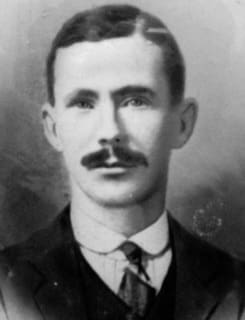 Captain Patrick White was a former carpenter who became active in the Irish War of Independence. Following arrest, he was sent to Spike Island on the 12th of April 1921, from Cork Male Gaol. White was in his mid-thirties and a captain in the Meelick Company of the East Clare Brigade of the IRA, having been involved with the Irish Volunteers since 1914. He was among a group attempting to meet the gun-running ship the Aud in 1916, only to hear of its capture and later sinking close to Spike Island. It was after participating in an attack on Crown Forces at Cartloe, Clare, in which two RIC officers were killed, that White was apprehended, along with his friend Thomas Ringrose. Both men suffered the trauma of being used as human shields on British convoys, to prevent their fellow IRA members from attacking the vehicles for fear of injuring them. It was a relief to both rebels to be taken off the mainland to Spike, White reportedly saying to his friend Ringrose ‘We are safe now’.
Captain Patrick White was a former carpenter who became active in the Irish War of Independence. Following arrest, he was sent to Spike Island on the 12th of April 1921, from Cork Male Gaol. White was in his mid-thirties and a captain in the Meelick Company of the East Clare Brigade of the IRA, having been involved with the Irish Volunteers since 1914. He was among a group attempting to meet the gun-running ship the Aud in 1916, only to hear of its capture and later sinking close to Spike Island. It was after participating in an attack on Crown Forces at Cartloe, Clare, in which two RIC officers were killed, that White was apprehended, along with his friend Thomas Ringrose. Both men suffered the trauma of being used as human shields on British convoys, to prevent their fellow IRA members from attacking the vehicles for fear of injuring them. It was a relief to both rebels to be taken off the mainland to Spike, White reportedly saying to his friend Ringrose ‘We are safe now’.
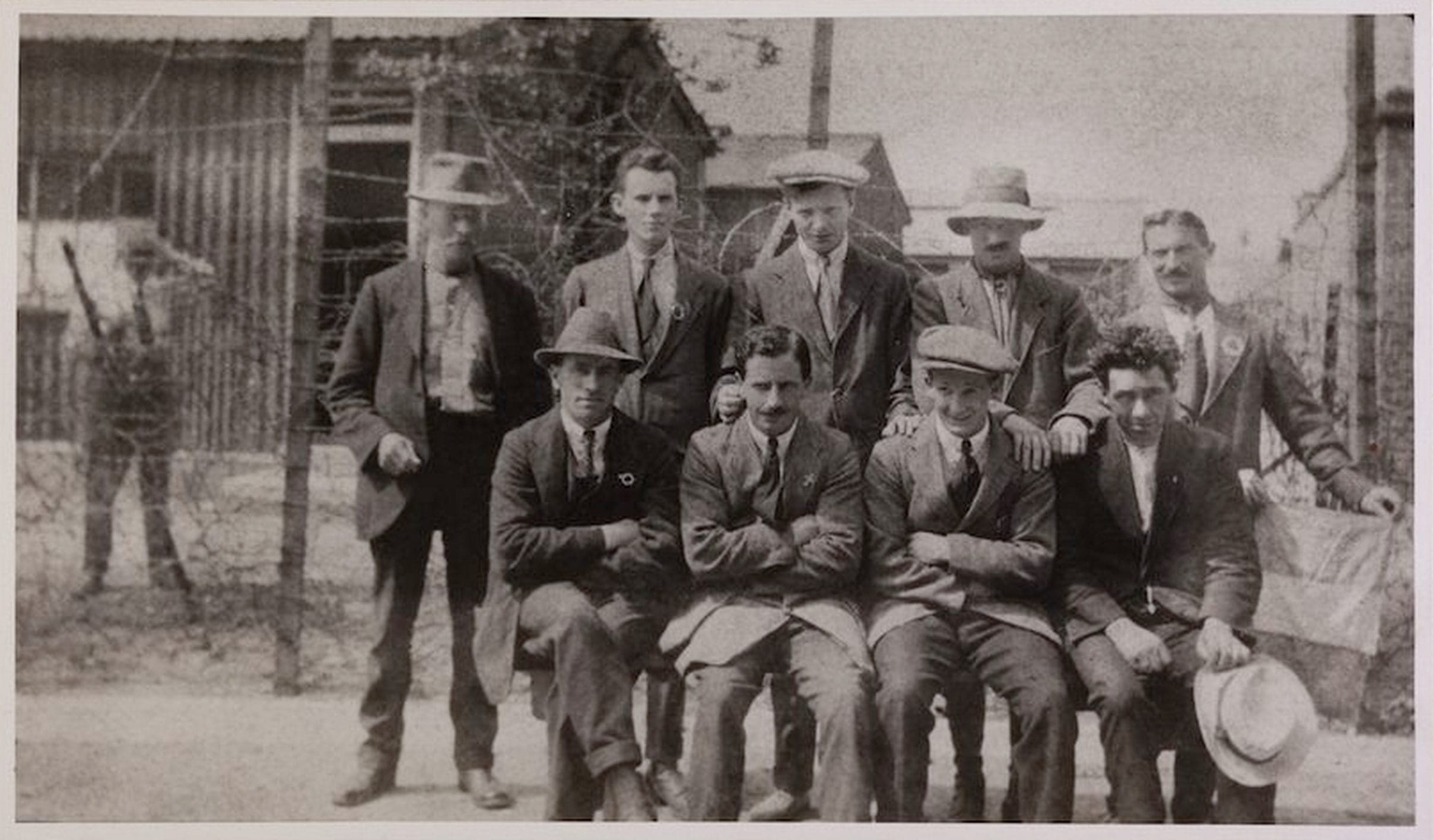
There was nothing unusual about the day, or the playing of sport in the prison compound, which was separated from the parade ground and patrolling armed guards by a 15 foot high barbed wire fence. Games typically took place in the late afternoon, ahead of the 8pm order to head indoors. Just before 6pm that evening the men knocked the ball among them until it went astray, rolling under the wire towards the parade ground where it stopped. Patrick White was closest and he ran to retrieve the ball, reaching to free it, when a sentry standing nearby raised his gun, pulled the trigger, and shot Patrick White. The shot rang around the fortress, startling birds and stunning the men who had been playing hurling with Patrick. After a moment of disbelief Patrick’s fellow internees rushed to his side. Prison guards raced to the location of the sentry, to ascertain what had happened. The internees saw the camp commandant quiz the soldier and insist he unload his weapon, before he was removed. The camps military doctor came to begin first aid, but the equally sudden arrival of the prison chaplain, Father Callanan, was an ominous sign. Patrick White’s comrades stood back and prayed, fearing the worst, and those fears seemed realised when the chaplain began administering the last rites. White was lifted into a stretcher and carried to the prison hospital where the medical attendant fought to save him, but the bullet had done its work. Patrick White died of at approximately 7.20pm, murdered while imprisoned on Spike Island Cork.
 White’s body was taken to the A block, where his countrymen held a vigil guard of honour overnight, not leaving him alone for a second. Hut one, A block, Spike Island, was a place of pain and suffering that night, as the soldiers of Ireland stood over their fallen friend, distraught and mute in disbelief. The following morning at 8.30am the cold body of Patrick White was lifted to the prison chapel, where a mass was held in solemn silence. When it ended his friends lifted the body back to hut one where it remained for two more days, while arrangements were made. On June 03rd, three days after the shooting, the body of Patrick White, now in a simple timber coffin, was brought once again to the prison chapel for a requiem Mass, before being carried by his fellow prisoners from the chapel towards the pier. Every single one of the prisoners and internees well enough to be present were there, lining the parade ground in tribute as the coffin passed. A select few of his fellow internees were permitted to carry his coffin beneath the forts entrance, out beyond the walls of the prison that confined him to catch sight of the mainland he was deprived of. An Ireland he had fought to free. On arrival to the pier they loaded his coffin on to a waiting ship, and turned to march back to captivity, looking over their shoulders as Patrick White, friend and fellow Republican, was taken on his last journey. His body was transported to Cobh where it was sent by train to his hometown of Meelick, County Clare, to be buried by his family. They might have feared, but could never have foreseen, that the next time they saw their relation following his arrest, would be at his burial.
White’s body was taken to the A block, where his countrymen held a vigil guard of honour overnight, not leaving him alone for a second. Hut one, A block, Spike Island, was a place of pain and suffering that night, as the soldiers of Ireland stood over their fallen friend, distraught and mute in disbelief. The following morning at 8.30am the cold body of Patrick White was lifted to the prison chapel, where a mass was held in solemn silence. When it ended his friends lifted the body back to hut one where it remained for two more days, while arrangements were made. On June 03rd, three days after the shooting, the body of Patrick White, now in a simple timber coffin, was brought once again to the prison chapel for a requiem Mass, before being carried by his fellow prisoners from the chapel towards the pier. Every single one of the prisoners and internees well enough to be present were there, lining the parade ground in tribute as the coffin passed. A select few of his fellow internees were permitted to carry his coffin beneath the forts entrance, out beyond the walls of the prison that confined him to catch sight of the mainland he was deprived of. An Ireland he had fought to free. On arrival to the pier they loaded his coffin on to a waiting ship, and turned to march back to captivity, looking over their shoulders as Patrick White, friend and fellow Republican, was taken on his last journey. His body was transported to Cobh where it was sent by train to his hometown of Meelick, County Clare, to be buried by his family. They might have feared, but could never have foreseen, that the next time they saw their relation following his arrest, would be at his burial.
The IRA internees and prisoners made their way to their huts that evening in low, angry mood. They were aware that an investigation was being held on that very day, 03rd June, expedited in the hope that some form of action would reduce the risk of reprisal. The very first person called to speak at the Military Court of inquiry was the only person who truly mattered – Private Whitehead, Second Battalion, Kings Own Scottish Borderers, who had been standing at number two sentry post when Patrick White approached the wire, and he shot White dead. His words were calculated and simple; “My orders were to fire at any internee tampering with the wire. The deceased was stretching out his hand through the wire to get a ball. In accordance with my orders I fired at him and hit him”. His defence stated that sentries had received written orders to fire without warning on a prisoner if they interfered with the wire. With such a clear instruction and a calculated and calm claim of innocence from the soldier, the inquiry concluded; “That the deceased was himself to blame, in as much as he tampered with the wire surrounding the compound in defiance of orders”.
It was an unfair verdict on White, and its true causes were clear to the IRA. There had been a serious assault on British soldiers in the nearby town of Youghal, in East Cork the morning of the shooting. A roadside bomb planted by the IRA was detonated as the band of the Hampshire Regiment passed, seriously injuring twenty and eventually killing seven. The attack incensed the armed forces, in particular the use of a roadside bomb, and when the news reached the British armed forces tasked with guarding Spike Island’s Republican prisoners and internees, the outcome seems clear. Patrick White was murdered in cold blood in reprisal.
It can never be proven, and no justice was ever served. The young Captain is remembered on the island for his service, and paying the ultimate price, in the fight for Irish freedom.
On the 12th of October, 1814, John Patrick Leonard was born on Spike Island, the result of his father’s employment as an engineer working on nearby Haulbowline Island. His father passed away when John Leonard was just four and he was raised by his uncle P.J Leonard, an Irish Christian Brother who founded schools in Cork. As a teenager the young John was sent to school in France, at Boulogne-Sur-Mer, and so began a lifelong love affair with France. He was back and forth between the nations until he settled in Paris in 1834, first studying medicine at which he failed miserably. He moved into studying English language and literature and became a teacher, at which he fared little better if the 1844 inspectors report from his school in Sens is to be believed. He was described as having an;
“Offhand manner. Mr Leonard is a feckless man and lover of disorderly pleasures. Inconsistent and prodigious with his money, he is not held in much esteem. Often, pupils that are docile with other teachers show him no respect and partake in acts of indiscipline in his presence. This teacher lacks authority and leadership”.
Clearly, if John Patrick Leonard was going to make a positive impression on his country of choice, it would not be in the field of academia.
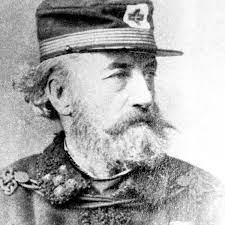
Fortunately for Irish interests, his passions and talents lay elsewhere. Despite his modest station, Leonard was extremely skilled at networking among France’s elite, and he curried favour with some of the leading lights of French society. Foremost among his friends were Marshall Patrice MacMahon and Adolphe Thiers, both future Presidents of France. He counted the Bishop of Orleans as a close friend, and no doubt a useful ally.
Maximizing these connections, Leonard was endlessly generous with his time in the advancement of Irish Nationalism. He became known as the unofficial Irish Ambassador for the remaining decades of his life. He petitioned the French government to intervene in the deportation of the leaders of Ireland’s 1848 rebellion and welcomed many of them to France. Men like John Mitchel, who he befriended and accompanied to present an Irish sword to the French President in 1860. He stood in for Mitchel at his daughter’s funeral, as the exiled nationalist had returned to America when she died. John Patrick Leonard became aqquainted with the aging United Irish exiles, like William Corbet and William Smith O’Brien, just as readily with the new breed of Young Irelanders – Charles Gavin Duffy, John O’Leary, John Devoy and James Stephens, a whos who of 19th century Irish rebellion.
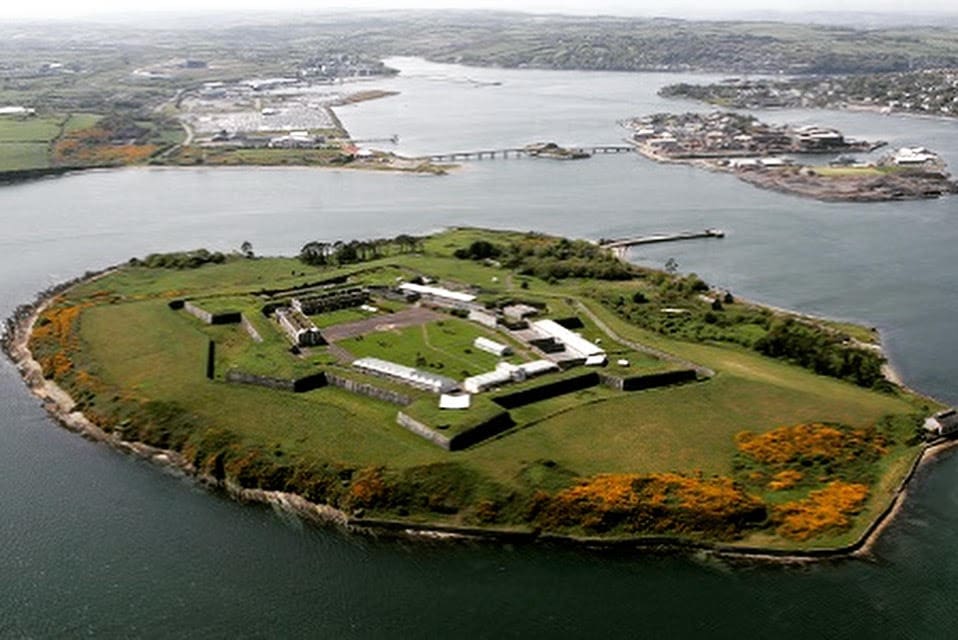
Paris had become something of a university of revolution for Irish nationalists, some of them exiled from Ireland. Here they could converse freely without looking over their shoulders, not something they could do back in Ireland. The Emperor Napoleon III considered their presence useful, something of a bargaining chip with the British, so the Irish were viewed with a mixture of fascination and trepidation. John Patrick Leonard became the focal point of these rebels, Irish nationalists visiting France like Thomas Francis Meagher, who Leonard brought to the cafes and restaurants of Paris, facilitating meetings.
It was with Meagher and another nationalist, William Smith O’Brien, that Leonard made arguably his enduring contribution to the Irish cause. Meagher was in France to study the learning’s of their revolutions, and Leonard was entertaining the visitors. He took the trio to the theatre to see ‘Phedre’, a French tragedy involving the lead actress singing a stirring version of the Marseillaise, while waving the French tri-colour. Meagher was said to be most moved, and saw the value of the symbolism. Prior to returning to Ireland, Meagher was presented with a green, white and gold tri-colour, woven by a group of sympathetic French women at the behest of Leonard, taking the French flag as it guide. It was this tri-colour that the returning Thomas Francis Meagher waved over the Mall in Waterford in 1848, in what was the first ever public outing of what would become the Irish national flag. Meagher would tell those present;
‘The white in the centre signifies a lasting truce between Orange and Green. I trust that beneath its folds the hands of the Irish Catholic and the Irish Protestant may be claspied in generous brotherhood’.

It is not recorded who exactly decided the choice of green, white and gold, but it is difficult to imagine Leonard being far removed from the decision making. With respect to the French ladies who forever since have been reported as crafting the flag, the work was completed at Leonard’s behest and it is decidedly unlikely they came up with the design. Tri-colours of various arrangements had been recorded in Ireland as early as 1830 when they were used in cockades and rosettes – knotted ribbons and pinned badges. The use of the colours and the deep symbolism of the green, white and gold suggest a deeper Irish understanding. It is possible it was solely Meagher’s, O’Brien’s or Leonard’s design, but the more likely situation is it was the three men who came to the design in unison, arguing the various points following their trip to the theatre prior to having it locally fashioned.
There is no questioning it was Leonard that directed the first flags fabrication, and the ceremonial nature of its presentation. As he had for decades before and after, John Patrick Leonard was pulling unseen strings, waging his own soft war, and representing on behalf of the Irish nation.
He is remembered on Spike Island as an ex-resident who did much for the Irish cause.